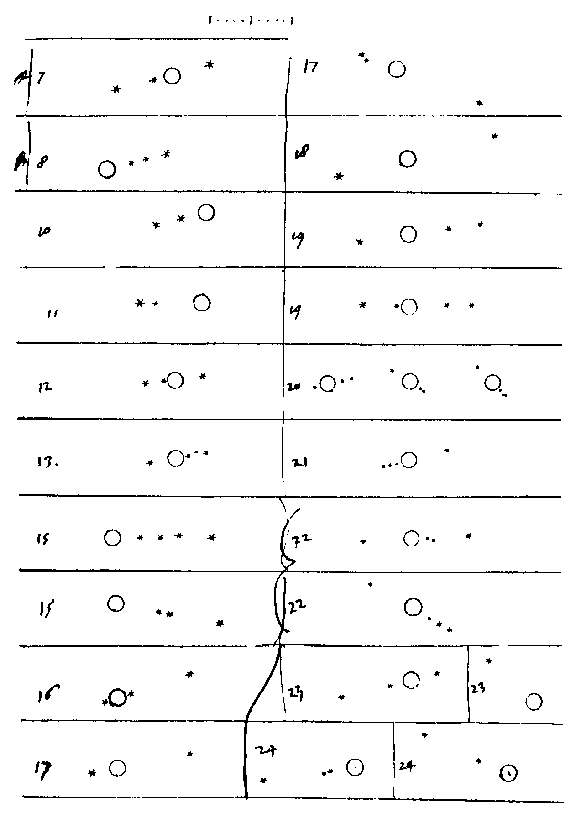

Sketches of the four moons of Jupiter, as seen by Galileo through his telescope. What he saw are the four larger moons of Jupiter, now known as Io, Europa, Ganymede and Callisto. The drawing depicts observations from the time period January 7 to 24, 1610. Galileo had considerable difficulty in recognizing the true meaning of what he was seeing; Callisto often lay outside the (restricted) field of view of his telescope, Io often lost in Jupiter's glare, and some moon occasionally disappeared in Jupiter's shadow or behind or in front of the planet itself.
Galileo named the moons Medicean Stars, after the ruling Florentine family Medici. This was a move calculated to improve his chances of moving back to Florence, and it succeeded. The names used today were coined by Simon Mayr (1573-1624), who for a time claimed priority on their discovery.
-Written and last revised 20 December 1997 by paulchar@ucar.edu.